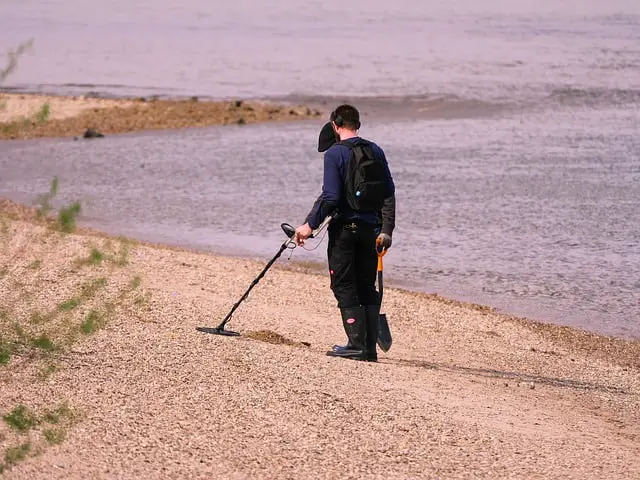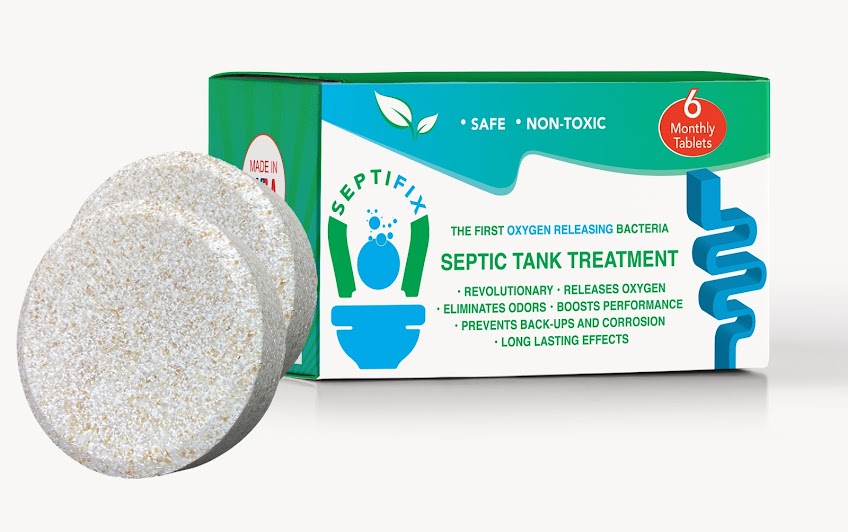Understanding Leach Fields and Leach Lines
Moving into a new home always takes some adjustment. For instance, if your old home used a sewer system but now you are on a septic and leach field system. For instance, where would you look for your leach field? How do you maintain a septic tank?
What is a leach field? A leach field is a series of trenches and perforated pipes covered with a porous material, like gravel, and filters pathogens in waste safely into the soil.
Not all septic systems have leaching lines. There are a number of options that are available to people in new construction or replacement. This guide will cover aspects of leaching beds and
septic systems that you might not have thought of. As always, if in doubt contact a plumber and have them do a quick inspection.
How Does A Leach Field Work?
A leach field is spread out in a large area of your yard to allow for proper percolation back into the water table. So, what happens when the water from your:
● Sink
● Toilet
● Dishwasher
● Washing machine
● Garbage Disposal
Slip away down the drain? This is where the leach field takes over. There are five stages that waste goes through when it leaves the appliance and heads out of the main drain. They are:
- Main Drain
- Septic Tank
- Drain Field
- Drain Pipes
- Percolation
Troubleshooting A Leach Field
There are just as many cases of a septic tank working for over twenty years as there are stories of them failing within the first month of moving into a new home. How can you tell if your septic system is in trouble?
There are a set of things to look for that will tell you if your system could require maintenance. They are:
- Faulty pipes – If the septic tank becomes filled with nonbiodegradable material, there is an excellent chance that your pipes will back up. The leach field will stack up with water. There could be puddles right on the surface of the yard. Look for dying or thriving grass as a sign of leaking pipes.
- Overflowing house water – When the pipes or septic system backs up, there is only one place for the water to go inside the house. If your sinks and tubs begin to fill with sewage there is a four-alarm disaster in your septic system.
- Slow drains – If you notice the waste in your sink or shower running more slowly, there might be a problem. If the drain pipes are backed up, then it will take more time for water to exit the main drain. Hair is the main culprit behind this. When you wash, hair slips down the drain and will bond together causing a clog.
- Distinct smell – There’s no mistaking the smell of raw sewage. If your yard has spots with heavy sewage smell, there could be issues. The smell comes from the leaking effluent that has begun to back up into your yard.
- Dead/abundant grass – Another sure giveaway to see septic issues is patches of dead or yellowed grass. This usually means a leak of some kind. The flip side of this is patches of beautiful fertile green grass exploding from the ground. The excess fertilizer for the lawn makes it so abundant.
- Frequent pumping – A standard form of maintenance is to have a company come and pump out the heavy water, a much fancier word for poo, which should allow the leach bed to work correctly.
If any of the above things are happening, you should check your system immediately. Failing to maintain a septic system could be the start of a home ruining problem. Homeownership comes with responsibilities. If a septic system gets too bad, the only solution can be a complete replacement. Take the time to take care of your place.
Types Of Leach Beds
Not every yard is set up to have your standard leach bed. There are several alternatives, and if you are considering replacing the list below will help. The types of leach beds are:
1. Gravity
2. Pressure Distribution
3. Mound System
4. Aerobic Treatment Unit
5. Cesspools
6. Drywell
7. Holding Tank
1. Gravity – A gravity leach bed is the standard bed that has been described in this article. It consists of a septic tank and leach field. Gravity forces the water through the trenches and into the filtering soil below. The weight of the water forces it through several layers of earth culminating in clear water being returned to the water source.
2. Pressure Distribution – The significant difference in a gravity system and pressure distribution system is the pump. In the pressure distribution system between the tank and the pipes is a pump that moves stagnant water onto the leach bed. Often homes are built with the septic tank in the wrong position to promote positive water flow to the trenches. This pump pushes the water that would typically pool and ruin your yard and possibly your plumbing.
3. Mound System – A mound system is mounted above ground due to a high water table on the property. It rests on or just above the ground to keep the pollution of the freshwater table from occurring. These are easy to spot because a gigantic mound will be in an otherwise flat environment.
4. Aerobic Treatment Unit – This unit uses air to promote the growth of bacteria that breaks down the effluent before it reaches the water table. The aerobic bacteria works much faster than its anaerobic counterpart, which is found in the soil. A specialized pump is needed to promote the extra airflow.
5. Cesspools – A cesspool is usually a concrete pit with a pipe connecting another tank. These are found in older homes and aren’t legal in most areas. They are prone to overflow and will contaminate the water source if not monitored. These are slowly being outlawed. Mishandling of a cesspool could contaminate an entire neighborhood’s water supply.
6. Drywell – A dry well system is an older system that is just as dependable as any other. The most significant difference in a dry well system and the others is a leaching bed. Dry well uses a series of long concrete cylinders buried in the ground to dispose of waste. Each barrel is filled with a particular filter like sand and gravel.
7. Holding Tank – Upkeep is a must with these systems. The ordinary septic tank should be serviced every one to three years, while the regular holding tank must be emptied once a month. A holding tank is a septic tank with no outlet hose. Tread with caution.
How To Make A Leach Field
Changing or installing a personal septic system can be a tremendous pain. If you don’t have the resources to hire equipment, a shovel is going to be your new best friend. You replace your system with seven steps. They are:
- Locate tank
- Main pipe
- Mark trench lines
- Dig trenches
- Lay pipe
- Cover trenches
- Plant grass
- Locate tank – You should find your plumbing drain lines. This is the best place to start looking for a septic tank. Follow the edges, and they should lead you to a piece of 4-inch pipe and the rest of the container.
- Main pipe – The large tube you looked for in the previous step is going to feed the branches of the leach field. Water should flow downhill with a slight drop in elevation.
- Mark trench lines – Once you have the correct position for your primary pipe, use spray paint to mark the route of your trenches. There should be at least three of them branching downhill from the central canal.
- Dig trenches – This is where the equipment will come in handy. The sides of the channel, as well as their direction, should all be level and straight. 18 to 36 inches deep is the standard range. The most time consuming and essential part of the project, digging the trenches, saves you heartache in the long run.
- Lay pipe – Perforated pipe can be purchased at your local home repair store. A two-inch layer of gravel should line the bottom of each trench. This will aid the tube with percolation when the time is right. Attach the ends of the pipe to the main sewer or a single piece stretched to all three trenches.
- Cover trenches – Once the pipes are in a spot that ensures proper flow, it is time to fill in the channels with dirt. First, you should use a layer of biodegradable material like straw to aid in absorption. Make about a one-inch layer before filling in the trenches with dirt. Pack the soil down and remember that the ground will settle over time.
- Plant grass – Now that the yard has been repaired, a new round of grass seed should be planted. An excess, or lack of, grass can be a great road flare for problems with your septic system.
How To Find Your Leach Bed
A leaching bed usually populates a side yard or any level ground around your house. The tank, unless it uses a pump, will be lower than the house to promote flowing water. Look for a greener field of grass than the rest. The leaching field will drain off waste, which also fertilizes grass, making the leaching field more natural to find. Finding the bed can be broken down into four easy steps. They are:
- Follow The Pipe
- Check The Downhill
- Use The Snow
- Probe The Ground
- Follow The Pipe – The main drain inside your house will lead to a pipe that goes directly to the septic tank. If you follow the drains inside your home to the main drain, finding the line to the septic is a breeze.
- Check The Downhill – If you have a gravity system, the best place to check is downhill from the house. A gravity system works on the premise that water will be pushed by gravity. Burying the tank forces the effluent to rise into the leach field. Gravity pushes the filtered water down into the ground, where it eventually reaches the water table or water source of the home. Searching the lowest spot in the yard is an excellent way to find the tank.
- Use The Snow – Waste carries heat. If you are lucky enough to live in an area that gets a decent amount of snowfall, check the yard for spots with no snow. This warming of the ground can be linked to the leaching field and its movement of water. If the wastewater seeps to the surface, it will halt the piling of snow and give you a sweet spot to search for your septic system.
- Probe The Ground – This is the most low tech, old school version that is offered. Find a stick, piece of rebar, metal pole, what have you, and begin to probe the ground for soft spots. The excess of water flow will make the ground soft and easy to investigate. Be careful not to penetrate so hard that you break the leach lines. A gentle push on the ground with some extra applied pressure should be all you need once you find a leach line probe it back to the main pipe and the tank buried below.
Septic Treatment And Protection
Your septic tank is a critical component of your home. Waste removal makes room for you to use all the water appliances in your home. A significant drawback of a septic system is its vulnerability to botanicals in your yard. A major villain in the world of septic is a root system. If there are trees around the septic leach bed, the roots could clog the pipes and cease the function of your septic system.
Are there products to help fight the onslaught of grass and roots in your septic system? Yes, there are several products available that clean and protect your septic system. I’ve compiled a list of the best products for your septic tank treatment.
CCLS Septic Bacteria Treatment – A great pour in treatment product that works great on slow drains. CCLS is also an additive for your septic tank, where it helps dissolve solid waste to reduce maintenance on the unit. This is a great deal! With a four-gallon pack, you can reach the standard for a yearly treatment. The standard, or the amount suggested by the manufacturer, is ½ cup per person in the household. So a family of 6 would need three cups a month.
Septic Tank Treatment – What can go wrong with such a no-nonsense product name? Septic Tank Treatment rates a 5 star on Amazon, and the convenience is the main draw. With a monthly pack, you avoid the hassle of measuring and pouring a hazardous liquid, which could lead to injury or death.
RID-X – A name brand that we all know and trust is hard to look away from. Rid-X Professional strength is a powder that you pour into your toilet. When you flush the chemical reaction caused by the Rid-X and pollutants in your pipes, make a solvent that cleans away impurities. On occasion, these have also been used to dissolve plant matter that has invaded septic lines.
Green Gobbler – Green Gobbler Septic Saver, is one of the preferred options on Amazon. A bold prediction on the box states, ‘Never have septic problems again, guaranteed!’ They make this claim because they use the most potent bacteria on the market. It comes in a six-pack container, which will get you through a half year of service. The money-back-guarantee is a massive draw for anyone with major recurring problems.
Are There Leeches In A Leach Bed?
No. There are no leeches in a leaching bed. While there are no parasites, there is a whole host of bacteria that can be deadly. Most often, a congealed sludge of bacteria forms on the trench walls forcing the water to back up. There are no parasites, but you should listen for slow drains to make sure an even worse problem isn’t brewing.
How Deep Should A Leach Bed Be?
A leaching bed should be a minimum of six inches deep, but it is recommended that you use a depth of 18 – 36 inches. 18 – 36-inch depth allows for layers of gravel and other biodegradable material to be layered around the pipe.
What Is The Life Expectancy Of A Leach Bed?
The Department of Agriculture states that an appropriately used septic system should last 20 years. What could cause a system to fail in a new home? The problem could be:
- Ground slope – A ground that slopes at a sharp angle could mean that there isn’t enough earth to place the tubes.
- Rock – An abundance of rocks in the area could mean extra work or damaged and broken pipes.
- Water level – If you live near a body of water, the rising and falling of the water level will also affect your septic system.
- Soil percolation – Your house should have been tested for this before construction, but if you have soil that is packed with dense material, the water could fail to percolate to the water table. What this means is that the filtering that would occur with a typical system isn’t possible with the soil.
How Do You Find A Clogged Drain?
Several factors can tell you if there is a drain pipe clogged or if your entire septic system has gone wrong. These simple cues are:
- Check drains on other floors – If the drains upstairs are excellent and the ones on lower levels are slow or backed up, you have a drain problem at the lowest level.
- Drain record – Does this particular drain always back up? Or is it usually dependable and drains quickly? If there has always been a problem with the appliance, then it is a plumbing issue with that particular tap.
- Use simple tools – If there’s a clog, break out some tools of your own and see if it is a quick fix. Use lights to look down into the drain for obstructions. A plunger can dislodge material in the pipe and solve the problem. If you have it, you can use a snake to try and remove particles from the drain, but this can open a can of worms
- Call in the big guns – If you have plunged and prodded to no results, there is no shame in calling in a plumber.
- Check the vents – The changing weather can lead to slower drains. When condensation escapes via vents, it can be frozen by cold air, which would seal the vent closed. A lack of oxygen at one end of the system makes for a slow drain.
- Inspect the main drain – After all the drains inside have been checked, it is time to take it outside. The central pipe will be between your septic system and house. The pooling of water here means that there could be an obstruction in the septic system, which means more significant problems.
- Check the box – On the top of the septic tank is a distribution box. This box covers the connection between the pipe leading from your house and the septic system itself. There could be a malfunction here that keeps water from flowing to the appropriate channel.
- Snakes, again – If you are one of the lucky people who have a plumbing snake, now would be the time to snake the drains between the house and septic, as well as between the tank and leaching field. The drain is a prime spot for roots and junk to make it into the pipe and ruin your whole day.
- Into the pit – This next step could very well be a thing of nightmare. If the drains and pipes leading to the tank are working correctly, you might have to get inside the container. I don’t mean climb inside, but I’d wager that sticking your head inside would be enough to make you weak in the knees. Look around and see if the tank has punctured or if there is an excess of solid material inside. If the baffles or connecting leaching field pipes have ruined, you could be in for major repairs.
- Check sewer lines – If you are connected to a sewer system, there could be a blockage in the drain between your tank and the system. Calling in the local utility guy or a trusted plumber would also be an appealing option at this time.
How Can You Tell If Your Leaching Bed Is Failing?
When a leaching bed begins to fail there will be multiple red flags to give you a heads up. They are:
- Pooling water – If water is pooling on the surface, there is a good bet that your bed has stopped working.
- Dying/Abundant grass – If there are visible lines of grass dying, there could be a problem with the bed. The lines can seep, and this seepage will either kill grass or make it grow extraordinarily lush and green.
- Yard smells – A dead give away is the smell. If the yard has a distinct sewage odor, the leaching bed could have severe problems.
- Read our Leach field & Line common Problem article here.
SOURCES
https://www.hunker.com/13417137/how-to-make-a-leach-field
https://www.paradisevalleyseptic.com/whats-a-leach-field/
https://www.epa.gov/septic/how-your-septic-system-works
https://sswm.info/factsheet/leach-fields
https://homeguides.sfgate.com/troubleshoot-leach-field-home-septic-system-101891.html
https://extension.umd.edu/learn/how-can-i-repair-my-failing-drainfield
https://www.mrrooter.com/greater-syracuse/residential-services/septic-drainfields/
Three Types of Drain Fields and How They Work
https://www.doh.wa.gov/Portals/1/Documents/Pubs/337-087.pdf
What Is An Aerobic Septic System? Some Easy To Understand Answers
https://clearchoicescleanwater.org/uploads/88/docs/1399septic_FAQs.pdf










